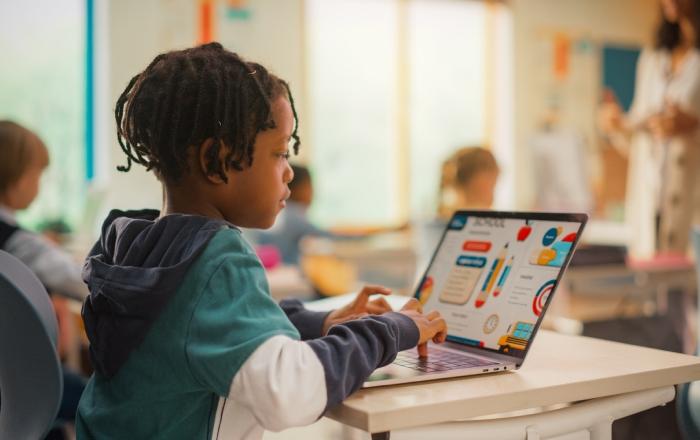Unlocking Student Engagement: Integrating Gamification into Standard curricula for Modern Classrooms
Are you searching for ways to boost student engagement and transform passive learning into an interactive, fun-filled experience? Integrating gamification into standard curricula might be the key to unlocking student motivation and driving modern classrooms toward greater achievement.
Introduction: The Engagement Challenge in Modern classrooms
Student engagement is a key indicator of academic success. Yet, with growing distractions and diverse learning needs, teachers struggle to capture students’ attention using customary teaching methods. Gamification in education leverages game mechanics and dynamics—such as rewards, challenges, and instant feedback—to make learning captivating, interactive, and effective.
This article explores how integrating gamification into standard curricula accelerates engagement, supports learning outcomes, and addresses the challenges of today’s ever-evolving educational landscape.
What Is Gamification in Education?
Gamification refers to the application of game-design elements—like points, badges, leaderboards, and quests—in non-gaming contexts. In education, gamified learning transforms lesson content into rewarding, interactive experiences that motivate students to participate, collaborate, and strive for mastery.
- Points: Earned for correct answers, completed assignments, or active participation.
- Badges: Digital rewards signifying achievements or skills mastered.
- Leaderboards: Rankings encourage healthy competition and a sense of progress.
- Challenges & Quests: Tasks, puzzles, or missions that drive learning and teamwork.
Why Gamification Works for student Engagement
Gamification taps into intrinsic motivators—autonomy, mastery, and purpose—while also providing extrinsic motivation through rewards and recognition. When students experience learning as play, their curiosity intensifies, retention improves, and they develop resilience toward problem-solving.
The Benefits: How Gamification Unlocks Student Engagement
Introducing gamification into the classroom doesn’t just make lessons more enjoyable—it brings tangible, research-backed benefits:
- Enhances Motivation and Participation:
- Game elements trigger cooperation and friendly competition, making students more eager to contribute.
- Improves Retention and Comprehension:
- Interactive tasks and immediate feedback solidify learning pathways, strengthening memory.
- Supports Differentiated Learning:
- Gamified assignments can be tailored to different ability levels, accommodating diverse learners.
- Encourages a Growth Mindset:
- Failure is reframed as a learning opportunity—mistakes become steps toward eventual mastery.
- Promotes Social and Emotional Skills:
- Team-based challenges foster interaction, collaboration, and empathy among classmates.
Practical tips: Integrating Gamification into Standard Curricula
Ready to bring your curriculum to life through gamification? Here are actionable strategies for teachers,instructional designers,and administrators:
1.Start Small and Align with Learning Objectives
- Pick one unit,lesson,or activity to gamify—quality over quantity.
- ensure game mechanics support your learning goals, not distract from them.
2.Choose Effective Game Elements
- For motivation: Points, badges, and progression bars.
- For collaboration: Team quests, peer competitions, or class-wide challenges.
- For feedback: Instant digital feedback, achievement logs, or micro-credentialing.
3. Leverage Digital Tools and Platforms
- Use classroom gamification apps like Kahoot!, Classcraft, or Quizizz for quizzes, quests, and interactive games.
- Advanced users can use WordPress-based LMS plugins with custom CSS for badges and custom leaderboards.
4. Encourage Student Agency
- Allow students to create their own avatars or teams, set personal challenges, or even design quiz questions.
- Facilitate reflection by asking students to track their own progress and set learning goals.
5. Foster Healthy Competition and Collaboration
- Balance individual and group achievements, ensuring all students feel included and motivated.
- Rotate team roles and provide varied challenges to cater to different strengths.
Case Study: Gamifying a Middle School Science class
Let’s see how a real classroom brought curriculum to life through gamification:
Actions Taken:
- Created a semester-long “Science Quest,” where students formed guilds (teams) and earned points for completing experiments, answering weekly “mystery questions,” and presenting discoveries.
- Issued digital badges for skills, such as “Laboratory Leader” or “Research Guru.”
- launched periodic leaderboard updates and held team-based review games on Kahoot! before tests.
Results:
- Student participation and homework completion soared from 60% to over 90%.
- Collaborative spirit improved, with students seeking to help teammates rather than compete destructively.
- Scores on the final unit test improved by an average of 15% compared to previous years.
First-hand Experience: Teacher & Student Voices
“Students who were usually quiet started volunteering for team leader roles. Gamification made my class a place for everyone to shine, not just those who get straight A’s.” — Mrs. Anne Peters, Science Teacher
“I loved earning badges! I was proud to show my badges at parent-teacher night, and it made me want to work harder, even when it was tricky.” — Jamal, 7th Grade Student
Common Challenges & Best Practices
- Over-gamification: Too many game elements can distract from learning.Focus on clear, purposeful mechanics aligned to content.
- Access & Equity: Not all students have equal access to digital devices at home. Ensure core activities can be completed in-class or provide alternatives.
- Transparency: Make point systems, grading rubrics, and leaderboard criteria explicit and fair.
- Feedback Loop: Regularly ask students for input on what’s working and adapt accordingly.
Integrating Gamification: Best-Use Scenarios
- Formative assessment reviews and exit tickets
- Long-term projects and flipped classrooms
- Literacy and STEM challenges
- Classwide theme days (e.g., Math Olympics, reading Quests)
- Online learning modules and hybrid classrooms
The Future: Gamification in Modern Classrooms
As technology continues to shape education, gamification stands out as a versatile, scalable solution for boosting student engagement. When thoughtfully integrated, it not only entertains but also empowers learners—equipping them with problem-solving, collaboration, and self-regulation skills essential for the 21st century.
Conclusion: Empowering Learners Through Gamified Curricula
Unlocking the full potential of students involves more than delivering content—it requires sparking curiosity, encouraging perseverance, and making every student feel valued.Integrating gamification into standard curricula infuses classrooms with energy, purpose, and measurable results. Whether you’re a teacher, administrator, or instructional technologist, now is the time to take the leap into gamified learning.
From simple digital badges to thorough classroom quests, gamification is redefining what it means to be truly engaged in learning. Make your classroom a game worth playing—where every challenge is a new adventure, and every student is a winner.

